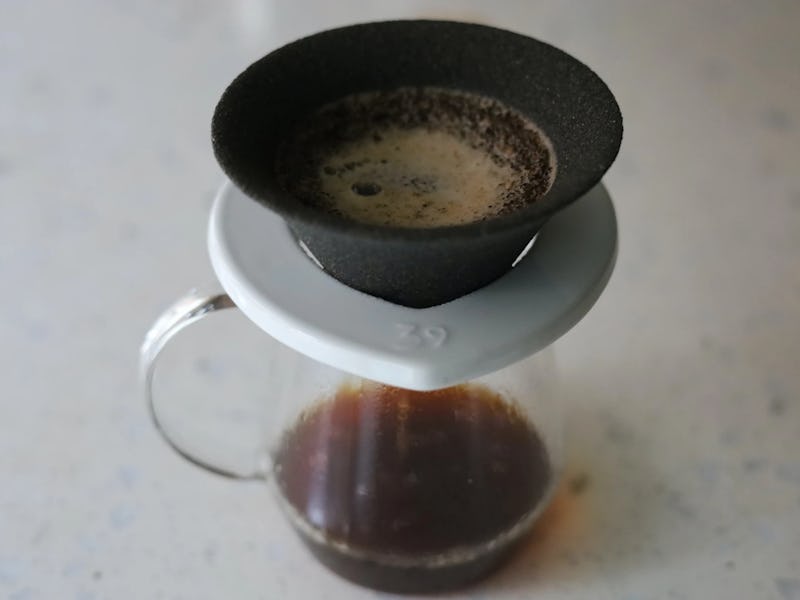This Thing Rules
This Japanese paperless pour over kit has ruined all other coffee for me
I’ll never use disposable, wasteful, paper filters ever again. And neither should you.

My coffee making routine is so precise that I’m reluctant to introduce any changes to the process. Using a manual grinder, I prepare 24 grams of coffee with beans almost always from the same roaster.
Prior to the proper pour, I wet the filter with hot water and warm both the Hario V60 I use for brew and the mug it’ll drain into. 350 grams of water then pass over the coffee grounds through a gooseneck kettle chosen for its steady flow. First 60 grams for the bloom, and then successive pours bringing the total to 150, 250, and the final count.
Day after day, I repeat the same process and enjoy what I consider to be a consistently perfect cup of coffee. Neither the routine nor the tools have changed in several years — that is, until I came across a paper-free pour over set on the Instagram page of a Kyoto-based cafe called Kurasu with nearly 100,000 followers.
The Cera filter is the lone product made by 39 Arita, a company based in a small Kyushu town from which it’s plucked its name. All of the filter, the holder, and saucer included are made out of Arita-yaki, a Japanese porcelain made locally. The filter itself is distinct, though, as it’s made out of a porous ceramic with numerous holes just micrometers in diameter to allow the coffee, and nothing else, to pass through.
Appearing on Karusu’s highly stylized page, the Cera filter stuck out first and foremost as an object of beauty. Through my work as a style writer, I’ve fallen in particular love with Japanese fashion because of its attention to detail, emphasis on quality, and utility. This filter, unlike any I’d ever seen, strikes all the same notes, and it reminds me of a molcajete — one of the most fetching items one can own in their kitchen.
Of course, all that really matters is the cup of coffee produced in the end. And after putting the Cera filter to use in my morning ritual, I can report that the quality is up to par with the V60 I’ve been using up to date. Not better, not worse, but the very same taste. With the end product being equal, what tips favor to the coarse-to-the-touch filter is the fact that I’ll no longer have to use paper filters.
I won’t be duped by the capitalist messaging that’s made consumers to feel like their actions, and not corporations’, are what are driving down the hospitality of our environment. But even though it’s the corporate giants’ production of waste and pollution at scale that’s the real problem, I still try to do my part to reduce my impact on the planet. Cutting out a paper filter per day may be a small measure, but it’s one of many I can now add to my attempts at sustainability.
Having to buy a new pack of filters every 50 or so days is a pain.
Waste aside, having to buy a new pack of filters every 50 or so days is a pain. I’m not industrious enough to order them online ahead of time, and the only local cafe I can rely on to have stock is a train ride away. It’s a small inconvenience, sure, but just like with my consumption, I try to shave down where I can.
Cleanup for the Cera filter is a cinch — just dump the grounds, rinse it out without scrubbing, and soak it in hot water. Because it’s billed as “semi-permanent,” you’ll want to take proper care to ensure its cleanliness and lifespan. And while I have no plans to do so, you can also use it to make tea, purify water, or even filter alcohol.
It could very well take several more years until I change anything about my brewing process, but now that I have it, the Cera filter is here to stay. At $43 plus shipping, which is available to the United States, it’ll take some months before I’ve hit a net savings, and I’m excited to see just how long this tasteful tool will continue to hold me down.
Input may receive a portion of sales if you purchase a product through a link in this article. We only include products that have been independently selected by Input's editorial team.